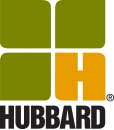Forage inoculants and preservatives: Essentials for an optimal forage program |
|
|
This item has been supplied by a forage marketer and has not been edited, verified or endorsed by Hay & Forage Grower.  Forage is a valuable farm feed ingredient — so why doesn’t forage quality get more attention? Many of us have invested large amounts of money into both equipment and seed and have dedicated countless hours to planting, cutting and checking fields. At the end of the day, many resources are dedicated to putting up quality feed, but we tend to deprioritize it once it’s back on the farm. Forage accounts for more than 50 percent of most dairy rations. As such, the quality of the forages fed is a key determinant of profitability. High-quality silages improve balanced rations but cannot necessarily be matched with complementary feedstuffs, which often add expense. Spoiled silages make it difficult for dairies to reach their profitability goals and can lead to serious herd health and fertility issues. Furthermore, forages are our primary feed resource, and the use of high-quality silages gives us the opportunity to reduce our purchased feed costs. When evaluating the process of producing high-quality forages on-farm, the topic of inoculants and preservatives often comes up. We are asked countless questions about the costs and application of these products and which ones might best fit a producer’s needs, but in most cases, the most important question is: Are they worth it? Inoculants and preservatives are very different. An inoculant’s goal is to add good, viable bacteria to help direct fermentation toward a low pH as quickly as possible, and/or to improve aerobic and feedout stability by preventing dry matter loss. Alternately, preservatives let naturally occurring bacteria drive fermentation and provide the best environment possible for doing so by either eliminating oxygen or by preventing detrimental bugs from growing. The different inoculants and preservatives available on the market can vary greatly depending on their specific bacterial strains or fermentation-enhancing ingredients. Forage crops harvested for silage contain a natural population of “good” microorganisms, which can promote the desired fermentation, as well as “bad” microorganisms — such as harmful yeasts, molds and other bacteria — that can cause poor fermentation and lead to excessive losses of dry matter, energy and nutrients. Because all silages are different, it is best to consider your unique situation when selecting the appropriate product to ensure that the “good” microorganisms win the fermentation battle and to meet your goals. When determining which inoculant to use, consider the following questions:
If you answered yes to any of the above questions, utilizing a research-proven inoculant could help you manage your forage quality potential by aiding in the fermentation process, enhancing digestibility and increasing feedout stability. Our research has led us to focus on bacterial strain combinations of either Pediococcus pentosaceus and Lactobacillus plantarum or Pedioccus pentosaceus and Lactobacillus buchneri. Both of these combinations aid in maximizing fermentation while enhancing digestibility and stabilizing feedout. When deciding whether or not a preservative is the right choice for you, consider the following questions:
If you answered yes to any of the above questions, a preservative may be a good fit for your forage program. Our research on preservatives has led us to focus on an enzyme- and sulfur-based product that allows unique enzymes to convert more complex forage carbohydrates to sugar. Water-soluble carbohydrates combine with enzyme-produced sugars to result in more sugars being available for naturally occurring, lactic acid-producing bacteria. This unique combination of ingredients allows for a more rapid and efficient fermentation by the lactic acid-producing bacteria naturally present in forage, while sulfur-containing antioxidants limit the growth of undesirable yeast and molds. Return on investment (ROI) for inoculants and preservatives The cost of beneficial bacteria and/or preservatives is relatively low in comparison to the cost of the land, equipment, fertilizer and seed needed to start the feed-making process — and it almost always pays for itself. Thanks to increases in dry matter recovery, maintaining stability at feedout and improved TMR stability, we can easily expect a total ROI of around $9.70/ton, in addition to increased profits from improved milk production when using a high-quality forage inoculant. Improved dry matter recovery: Expected DM recovery benefit = 4.2% Assumed value of silage = $50/ton fresh weight (30% DM) Value of DM = $167/ton = $1.67 per point of DM So, a 4.2% improvement is worth $7.01/ton DM = $2.10/ton as fed. Maintaining stability at feedout (reduced DM loss, reduced dry corn purchases) 4.4% reduction in DM loss = 44 tons/1000 tons DM = 40.2 tons 86% DM dry corn Value of dry corn = $133/ton So, a value of 4.4% less DM loss at feedout = $5,346/1000 tons silage DM (3,333 tons as fed) At 30% DM, value per ton of silage = $5,346/3,333 = $1.60/ton Improved TMR stability High-quality inoculants can have greater stability than 5–10 lbs. of bunk stabilizers/ton as fed Generic bunk stabilizer price = $1.20/lb.; cost per ton TMR as fed = $6.00–12.00 So, savings per ton of silage = $6.00–12.00/ton as fed (Assume $6.00) Total ROI = $9.70/ton It’s important to remember that high-quality inoculants and preservatives cannot make up for poor crop management or poor-quality harvest due to less-than-desirable growing and harvesting conditions. When harvesting forage, the primary goals should always focus on targeting the appropriate stage of maturity and moisture content, while managing the harvest, storage and feedout process. Optimizing forage quality at harvest allows inoculants and preservatives to capitalize on their duties, translating to increased profitability and efficiency for the producer. Please reach out to your local Hubbard Feeds dealer or dairy team member for inoculant and preservative pricing to better reach your forage quality goals. |
